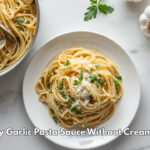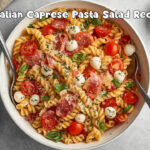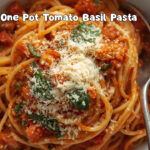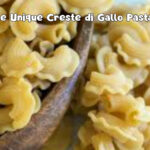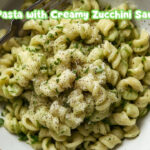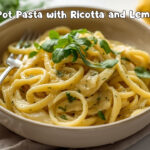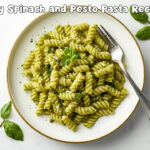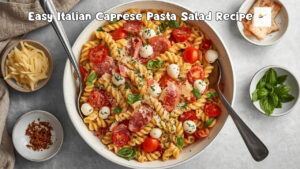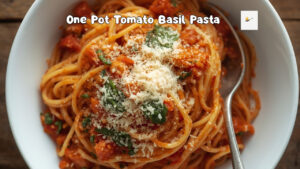Table of Contents
ToggleAmerican cheese vs cheddar cheese are quite different choices. The average American consumes approximately 42 pounds of cheese per year. Wondering? That’s right, cheese is everywhere: in sandwiches, burgers, pasta, and even snacks on the go. Out of all the options, cheddar cheese remains the most beloved, while American cheese also ranks among the top five favorites. However, despite being found side by side in restaurants and refrigerators, these two cheeses are entirely different.
In short, American cheese is smooth, mild, and melts evenly, perfect for burgers, while cheddar is sharp, crumbly, and suits stronger dishes.
In this article, we will delve into the American cheese vs cheddar cheese debate, covering their production processes, flavors, nutritional information, and best uses. By the end, you’ll know difference between cheddar and american cheese and which cheese fits your needs and how to use them effectively in cooking.
American Cheese vs Cheddar Cheese Comparison Chart

American Cheese
American cheese is processed cheese made from a blend of cheeses, usually cheddar, Colby, and similar cheeses. It is known for its creamy and salty flavor, smooth consistency, and low melting point. The cheese is typically bright yellow or orange and is often found in wrapped slices or sold in stacks.
American cheese was invented in the early 20th century and is commonly exported to various countries. It is frequently used in sandwiches and cheeseburgers and is a common ingredient in many recipes. The texture of American cheese makes it ideal for reliable cooking because it melts evenly.
What Is American Cheese Really Made Of?
Cheddar Cheese
Cheddar cheese is a natural cheese typically hard, off-white, and has a sharp-tasting flavor. It originated from the village of Cheddar in England and is now produced all over the world.
Cheddar cheese is made using local milk and traditional methods. These methods involve curdling the milk with an enzyme complex called rennet. The curds and whey are separated, and the curd is kneaded with salt to enhance the flavor. The cheese is then aged at a constant temperature, which affects its sharpness and texture.
Cheddar cheese can be crumbly with a strong, extra-mature flavor, known as vintage cheddar. The Cheddar color can vary from white to deep orange, depending on whether coloring agents like annatto are added.
Production Differences Between American Cheese Vs Cheddar Cheese
Now that you know what American and cheddar cheese are, let’s move on to their production methods. The primary differences in production between American cheese vs cheddar cheese lie in their processing methods:
American cheese is not a natural cheese; it’s a processed cheese. According to the Food and Drug Administration (FDA), its formal name is pasteurized processed American cheese.
American cheese was created in 1911, when scientists discovered that they could melt cheese with special ingredients to make it last longer and shelf-stable cheese products. Kraft Foods later developed its version of American cheese in both slice and block forms.
American cheese is mild, creamy, and soft. It melts very easily, which makes it ideal for hot sandwiches and comfort food. It’s usually a medium-yellow color and is made vigilantly to remain consistent in taste, texture, and color.According to the FDA, American cheese must contain at least 51% real cheese, while the remaining elements may include milk, cream, and stabilizers. The emulsifiers are used to give it a gooey texture that melts perfectly on burgers and grilled cheese sandwiches.
Now, let’s talk about Cheddar cheese.
Humans have been enjoying cheese for more than 9,000 years. In ancient times, people made cheese to prevent milk from going rotten. Over the years, this method has been used to make cheese and preserve its nutrients for later use.
Cheddar is a natural cheese, produced through a simple method that involves warming milk, adding beneficial bacteria, enzymes, and salt, and then allowing it to thicken into curds (the solid component) and whey (the liquid component). The curds are drained, pressed, and aged for between two and twelve months. The longer it ages, the stronger and sharper the flavor becomes.
Cheddar cheese is known for its rich, tangy taste. A few months’ aged cheese is mild, but with time, it becomes sharper and crumblier. Aged cheddar is drier and doesn’t melt as easily, while mild cheddar melts more easily and has a softer texture. You can enjoy it shredded on food, sliced in cold sandwiches, or melted into a creamy cheese sauce.
Cheddar cheese comes in a range of colors, from white to deep orange. It comes from annatto, a natural plant-based coloring that doesn’t change the flavor at all.
Both cheeses are safe and closely monitored by the FDA and USDA, regardless of whether they’re made with pasteurized milk or natural milk (at least 60 days at 35°F).
For more insights and user discussions on the taste and texture differences American cheese vs cheddar cheese, visit this Quora link. It provides valuable perspectives on cheese preferences.
Taste Profile and kitchen Uses
American cheese is often underrated, but it’s an excellent choice for so many reasons. What I love most is its smooth, creamy texture. It melts perfectly, making it ideal for burgers, sandwiches, and grilled cheese or even a quick cheese toast. Its mild flavor is another big plus. It blends in beautifully with other ingredients without overpowering the dish, making it extremely versatile. It is always convenient when you’re making a gooey mac and cheese or a melty sandwich.
Cheddar cheese, on the other hand, has a sharper, more complex flavor. It’s great for adding a punch to dishes. Unlike the mild smoothness of American cheese, cheddar delivers a rich, tangy bite that not only stands out but is a perfect choice when you want your cheese to make a lasting impression. Its robust flavor pairs beautifully with nuts, whole-grain crackers, and even dark chocolate. The versatility of cheddar makes it perfect for pairing with wine, serving on cheese boards, and mixing into gourmet recipes.
Substitutes
American cheese can be swapped with cheddar or Swiss cheese; they add a bit more flavor and richness to your dish, both of which have excellent melting properties.
And if you’re out of cheddar, don’t worry! You can replace it with Colby, Cheshire, or even American cheese for a milder, creamier alternative that still works great in most recipes.
American Cheese vs Cheddar Cheese: Which One is Better?

The choice between American cheese vs cheddar cheese depends on personal preference and the dish you’re preparing.
Let’s be real, cheese is delicious, but it’s also something to enjoy in moderation. Both American cheese and cheddar cheese are high in fat and calories. Cheddar has a bit more fat and saturated fat, but it’s lower in sodium, which is important if you’re watching your salt intake.
Cheese is mostly a source of fat and protein. It should be consumed in moderation, especially when your overall diet is rich in healthy choices, such as lean proteins (chicken, fish), whole grains, fruits, vegetables, beans, and heart-healthy fats like nuts and olive oil.
Moreover, if you’re keeping an eye on your sodium levels, cheddar is generally the better option; it’s lower in sodium and has more protein. Excessive sodium intake can lead to increased blood pressure, thereby increasing the risk of heart and kidney problems. Lowering your sodium intake is a great way to maintain a heart-healthy lifestyle.
In the end, both cheeses are fine, but in small amounts. Continue to monitor the amount of fat, saturated fat, and sodium you’re consuming from other foods throughout the day.
And if you’re trying to cut back on processed foods, cheddar is usually the better natural option.
From my experience, I enjoy using cheddar cheese for its versatile flavors and textures in various recipes, but American cheese is my go-to for quick, melty sandwiches.
American Cheese vs Cheddar Cheese: Nutritional Differences
Now that you’ve learned which cheese might suit your preferences let’s dive into their nutritional comparison. Below is a breakdown of their key nutritional information, highlighting differences about American cheese vs Cheddar cheese:

To compare American and cheddar cheese, let’s compare slices of each, about 21 grams.
When it comes to calories, both cheeses have a similar calorie count. However, fat and sodium are more important to be concerned about.
Eating too much of a saturated fat diet is linked to heart disease. Research indicates that lowering saturated fat intake to less than 10% of total daily calories can reduce the risk of heart problems by up to 21%.
If someone eats 2,000 calories a day, that means no more than about 22 grams of saturated fat daily.
Here’s the breakdown:
- Cheddar cheese: 7.1g of total fat, with 4g of that being saturated fat
- American cheese: a bit lower, with 5.9g of total fat and 3.4g of saturated fat
Next up is sodium (salt), another important consideration. According to The American Heart Association, consuming no more than 2,300 mg of sodium per day is recommended.
- American cheese has 317mg of sodium per slice — that’s quite a bit.
- Cheddar cheese has only 137mg per slice, since it’s less processed.
Excessive sodium intake can lead to elevated blood pressure. Again, it is also a major risk factor for heart disease and kidney problems. That’s why it’s important to watch your sodium intake.
Both American and cheddar cheese are low in carbs and fiber, and most of their calories come from fat and protein. To feel full longer, try pairing cheese with high-fiber foods like fruits, vegetables, or beans. This combo helps keep hunger away and reduces the desire to snack later.
Glycemic Index
Most cheeses are very low in carbs, which makes it hard to measure their glycemic index (GI). According to the American Journal of Clinical Nutrition, we classify cheddar cheese as having a glycemic index of 0, meaning it has no impact on blood sugar levels; however, it contains similar nutrients with just more carbohydrates.
As American cheese is low-fat processed cheese, it has a slightly higher glycemic index of 10, which is still considered very low.
So, while both cheddar and American cheese won’t cause significant spikes in blood sugar, cheddar has a lower GI and may be the better option if you’re closely monitoring your blood sugar.
Minerals & Vitamins
American and cheddar cheese share many similar vitamins and minerals, but there are a few key differences, particularly in calcium, vitamin D, sodium, and selenium.
- Vitamin D: American cheese contains more, approximately 8% of your daily needs, while cheddar has just 1%.
- Calcium: American cheese also contains a slightly higher amount of calcium, providing 15% of the daily value, compared to 11% in cheddar.
- Sodium: Cheddar is the better pick here, with lower 137mg per slice, while American cheese has 317mg. Since adults should limit their sodium intake to 2,300mg per day.
- Selenium: This mineral is slightly higher in cheddar at 11%, and American cheese has 7%.
Health Effects of American Cheese and Cheddar
Impact on Cardic Health
American cheese contains high levels of saturated fat and sodium, which may contribute to high blood pressure and an increased risk of heart disease. While cheddar cheese also contains saturated fat, it is typically made with fewer processed ingredients and offers a slightly better nutritional profile. Consuming either cheese in moderation is essential for maintaining heart health.
Body Weight Balance
Both American and cheddar cheese are calorie-dense, making portion control crucial for weight management. Overconsumption can lead to excessive calorie intake, so opting for smaller servings allows you to enjoy these cheeses without compromising your dietary goals.
Digestive Health
Cheddar cheese is generally easier to digest than American cheese, which undergoes more processing. Its natural aging process reduces lactose content, making it a preferable choice for those with lactose sensitivity. However, consuming either cheese in moderation is recommended to prevent potential digestive discomfort.
Making American Cheese and Cheddar Cheese at Home
I’m sure by now you have all the information you need, and you might be wondering how to make these cheeses at home. Well, I’m happy to share my method with you! It’s actually quite easy, and you don’t need to spend money buying expensive cheeses – you can make them right in your own kitchen. Here’s how you can make both at home:
Homemade American Cheese
Ingredients:
- 1 gallon of whole milk
- 1/4 tablet of rennet
- 1/4 cup of distilled white vinegar or lemon juice (to acidify the milk)
- 1/4 cup of salt
- 1/4 cup of butter (optional for creaminess)
- A pinch of sodium citrate (an emulsifier, optional)
Method:
- Heat the Milk: In a large pot, heat the milk slowly over medium heat, bringing it to around 85°F. Stir regularly to avoid burning.
- Add the Vinegar: Add vinegar or lemon juice to the milk, stirring gently. This will help curdle the milk and remove it into curds and whey.
- Add Rennet: Dilute the rennet in a small amount of cool water and stir it into the milk. Let the milk sit for about 30 minutes to fully curdle.
- Cut the Curd: Once the curds have formed, use a knife to cut them into small cubes. This step is crucial as it will help the curds release the whey.
- Cook and Stir: Heat the curds gently to about 125°F, stirring frequently. This helps the curds firm up and release more whey.
- Drain the Whey: Once the curds are cooked and separated from the whey, drain the whey through a fine mesh strainer. You can reserve the whey for use in other recipes.
- Add Salt and Butter: After draining the curds, add salt and butter for extra flavor and creaminess. For an even smoother texture, add sodium citrate, an emulsifier that helps the cheese melt smoothly.
- Mold and Set: Place the cheese in a cheese press or mold. Press the cheese softly to remove any remaining whey. Leave the cheese in the mold for a few hours to set.
Tips:
- Do not skip the emulsifier if you want a smooth, meltable cheese.
- Maintain a constant temperature when heating the milk and curds for the best texture.
- Let the cheese cool completely before using.
Homemade Cheddar Cheese
Ingredients:
- 1 gallon of whole milk
- 1/4 tablet of rennet
- 1/4 cup of salt
- 1/4 cup of vinegar or lemon juice
- Cheesecloth
Method:
- Heat the Milk: Like American cheese, start by heating the milk slowly over medium heat until it reaches about 85°F.
- Add the Vinegar: Add vinegar or lemon juice to acidify the milk, helping it curdle.
- Add the Rennet: Dilute the rennet in water and stir it into the milk, letting it sit for about 30 minutes to form curds.
- Cut the Curds: Once the curds form, cut them into small cubes, just as you would for American cheese, to help release the whey.
- Cook the Curds: Gently heat the curds to around 125°F, stirring occasionally, to firm them up.
- Drain the Whey: Drain the whey through cheesecloth, as you would with American cheese.
- Add Salt: After draining, mix in the salt for flavor.
- Press the Cheese: Press the curds into a mold and remove excess whey, just like with American cheese.
- Aging: Unlike American cheese, cheddar requires aging. Wrap it in wax paper and store it in a cool place for several weeks to develop its sharp flavor.
Tips:
- Don’t skip pressing the curd — this is essential for removing moisture and creating the right texture.
- If you want your cheddar cheese to be sharper, age it longer at a constant temperature of around 50-55°F.
- Maintain dairy hygiene to ensure your cheese does not become contaminated during the process.
Key Differences in Techniques
- American cheese requires a more processed method, including emulsifiers, to achieve its smooth, meltable texture.
- Cheddar cheese uses traditional methods, including curds and whey separation, kneading, and pressing to create its firmer texture and aged flavor.
FAQs About American Cheese Vs Cheddar Cheese
Q: How is Cheddar traditionally made using modern techniques?
A: Cheddar traditionally involves curdling milk with rennet, separating curds and whey, and combining them with salt before being heated. Modern systems, like the revolving breaker, ensure high dairy hygiene during the manufacturing process.
Q: What is the difference between processed cheeses and traditionally made cheeses like Cheddar?
A: Processed cheeses are manufactured with emulsifiers and mixed cheeses, resulting in a smooth texture, while Cheddar traditionally uses natural techniques like curdling, heating, and aging to achieve its distinct flavor.
Q: Is cheddar cheese healthier than American cheese?
A: Cheddar cheese often contains more natural ingredients and calcium, making it a potentially healthier choice, depending on dietary needs.
Conclusion
In the American cheese vs cheddar cheese debate, both have unique characteristics and uses. Whether you prefer the creamy melt of American cheese or the sharp bite of cheddar, each has its place in the culinary world. Understanding these differences allows you to choose the best cheese for your needs, ensuring delicious results every time.



